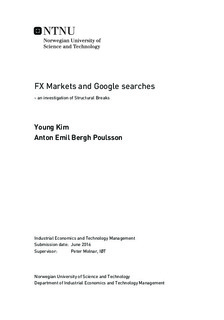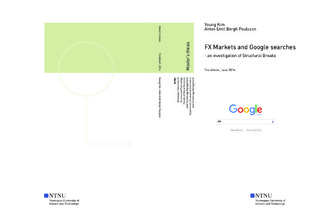| dc.description.abstract | This paper studies the dynamics of volatilities and correlations calculated from high-frequency data for seven major currency pairs. We build our model upon the precise Heterogeneous Autoregresive (HAR) model of \citet{corsi}. Since foreign exchange rate dynamics can change over time, we implement a flexible tree Heterogeneous Autoregressive (tree-HAR) model. The model is able to detect various regimes, and even the number of regimes is determined endogenously within the model. We find several regimes in each of the 7 volatility and 21 correlation time-series. Interestingly, these regimes are much more obvious for correlations. In addition, we find the tree-HAR model to react faster to structural breaks than the HAR model. Furthermore, we examine whether Google searches contain additional information not already included in modelling structural breaks. Despite not affecting regimes, Google search data provide as a helpful proxy measuring market uncertainty - the same uncertainty causing many of these structural breaks. | |

